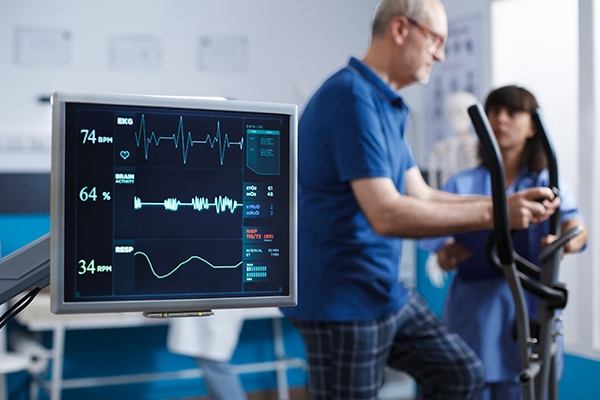These Tests Can Show How Healthy Your Heart Is

A heart is only the size of a hand. It continuously beats and pumps blood throughout the body to keep us alive. The beats are between 60 and 100 times per minute, or approximately 103,680 times per day. With this fact alone, does it make sense if we have to keep this life machine running?
A healthy heart can pump blood around the body at a regular beat without needing to work as hard to get through clogged blood vessels.
Meanwhile, heart disease is a problem that happens when your heart is not healthy. Some cardiac disorders are
- Coronary artery and blood vessel disease is due to the hardening of the arteries (atherosclerosis). This is the most common heart disease and causes the majority of heart attacks and chest pain.
- Unhealthy heartbeat (arrhythmia).
- Problems with the heart's structures include valves, chambers, walls, and muscles.
- Heart failure occurs when the heart stops working. (Usually after a heart attack or chronic high blood pressure.)
Is my heart in good health?

If you have family members who have heart disease, have risk factors, or want to know the dangers of heart disease, see a doctor!
The doctor will do two tests to determine the health of your heart: a screening test for those with no history of heart disease and a diagnostic test for those suspected of having heart disease (such as having had a heart attack). This is done to monitor treatment and minimize symptoms.
Blood pressure and weight checks are two of the most basic and crucial screening procedures that should be done at least once a year.
Because high blood pressure usually has no symptoms, it is critical to check your blood pressure. The most influential risk factor for heart disease is untreated chronic high blood pressure.
Obesity and having a big waist are also significant risk factors. Body mass index (BMI) can be calculated by measuring waist circumference and height. The BMI was then utilized as a predictor of being overweight or obese.
Fasting lipoprotein (cholesterol) and blood sugar profile tests may also be performed to obtain a more accurate picture of cardiac disease.
Cholesterol and blood sugar tests measure total cholesterol, LDL, HDL, and triglyceride levels. Cholesterol readings can help you decide if you need to take cholesterol-lowering medicines and can more correctly estimate your risk of heart disease.
The next test is a blood sugar test called hemoglobin A1C (HbA1C). This test shows the average blood sugar (glucose) level during the previous two to three months. People with high HbA1C levels are more likely to develop heart disease, whether or not they have diabetes.
Cardiovascular disease screening

Following a basic checkup, the doctor will do the following tests:
1. Electrocardiography (ECG)
The electrocardiogram (ECG) detects the electrical activity of the heart. This test measures how well your heart beats. Small wire dots are applied to the chest, arms, and legs. Doctors use ECG to diagnose irregular cardiac rhythms (arrhythmias), heart muscle thickening, artery narrowing, and heart attacks.
2. Treadmill test
A treadmill test, often known as an exercise test, is a type of ECG performed while you exercise. This test lets the doctor tell how well your heart operates throughout the exercises. This test is typically used to detect coronary heart disease or select the best exercise type for you.
3. Ultrasound cardiography (USG)
USG, or echocardiography, uses sound waves to create a picture of your heart. This device is used by doctors to check for issues with the heart's valves and chambers and to determine how hard the heart is pumping blood.
4. Angiography
Angiography, or cardiac catheterization, is done following a heart attack or angina. A catheter will be inserted into an artery in the groin, arm, or wrist that goes to the coronary arteries near the heart.
The catheter is coated with a unique dye that allows X-rays to see the heart and coronary arteries better. The test aims to determine how many of the coronary arteries are obstructed and how well the heart is pumping.
5. Magnetic resonance imaging (MRI)
An MRI employs powerful magnets and radio waves to create detailed images of the heart on a computer. A specific dye is occasionally used in this examination to make sections of the heart and coronary arteries more visible. An MRI scan reveals the anatomy and function of the heart, allowing doctors to determine the best treatment.
6. CT scan
This computed tomography (CT) scan is used to diagnose coronary artery disease. This test measures the amount of calcium in the arteries of the heart. Calcium in the arteries implies coronary heart disease.
Maintaining heart health
Your heart might seem healthy during several screenings. Yet, you may still have some risk factors. Conversely, even if your test results are less than ideal, this does not imply that you will develop primary cardiovascular disease.
So, if you want a healthy heart, engage in sports, eat nutritious foods, avoid smoking, and manage stress well. Check for high blood pressure, cholesterol, and blood glucose levels regularly.
Don't ignore your heart health!

With the latest ECG and treadmill facilities, GWS Medika Permata Hijau Main Clinic, a health clinic in Jakarta, helps detect heart problems early. Get a complete check-up here, a health clinic in Jakarta.
Healthy heart, happy life!



